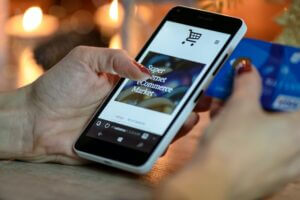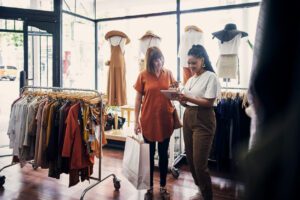Towards an explosion in e-commerce

Over the past two years, customers have had to adapt to a market that has operated in stop-and-go mode due to various confinements, curfews, non-essential store closures and so on.
One of the big winners in this health crisis is e-commerce. Today, according to FEVAD, nearly 41.6 million French people buy online, representing 81.4% of French Internet users.
The proof is in the pudding: again according to a FEVAD article (February 2022), the number of active merchants in 2021 is up 11% on 2020, reaching a total of 200,000 active merchant sites! 40,000 new merchant sites have been created since the start of the pandemic. 2021 has been an extraordinary year for marketplaces, with 2 major players raising significant funds: Mirakl with €472m and ManoMano with €300m.
Towards a new way of consuming
The covid crisis has changed the way consumers think, and thus the way we buy. Customers are increasingly turning to local, organic, responsible and "made in France" products. All sectors are concerned, as demonstrated by the emergence of certain sites specializing in organic products, such as Lafourche.fr or Greenweek, a site owned by Carrefour. The non-food market is not to be outdone. Indeed, a site like Cdiscount does not hesitate to offer exclusively "made in France" ranges.
Customers are also buying more and more refurbished products. In 2020, according to a study by IFOP, 60% of French people bought or intended to buy a refurbished cell phone, compared with 53% in 2019. The second-life market is booming, as demonstrated by Backmarket's recent €450m fundraising. A number of long-established e-commerce sites, such as Fnac and Rue Du Commerce, have also jumped on the bandwagon, offering a wide range of refurbished products.
Towards the end of the store?
 Some would argue that e-commerce is contributing to the demise of small businesses. On the contrary, it should be seen as an opportunity. An opportunity for growth, of course, but above all an opportunity opportunity for changeIt's all about reorganization and, above all, the ability to reinvent ourselves around our customers' needs and desires.
Some would argue that e-commerce is contributing to the demise of small businesses. On the contrary, it should be seen as an opportunity. An opportunity for growth, of course, but above all an opportunity opportunity for changeIt's all about reorganization and, above all, the ability to reinvent ourselves around our customers' needs and desires.
To achieve this, retailers need to streamline the customer journey and make online and offline compatible. The role of the phygital store (physical and digital) needs to be redefined with the aim of offering customers a new experience and (re)creating links: digitalizing the store, humanizing the website (live shopping, for example), improving the customer experience (UX, home delivery within a few hours, optimizing payment methods, click and collect, etc.).
Proximity to the customer has also become one of the challenges of e-commerce. The aim is to enter the consumer's circle of intimacy, as brands such as Amazon and Netflix have done so well. Other local retailers are also trying their hand at this via local marketplaces, which enable them to target customers in a geographical area close to them. This is the case, for example, of the "Ma Ville Mon Shopping" marketplace, which enables consumers to purchase over 200,000 products from local merchants. These marketplaces represent a real business challenge, particularly during busy periods such as the end-of-year holidays.
E-commerce and in-store retailing therefore have many years ahead of them. But the hardest part is still to come: pooling their efforts and finding a synergy to meet customers' needs and, above all, win their loyalty!
By Rémi Garnier

